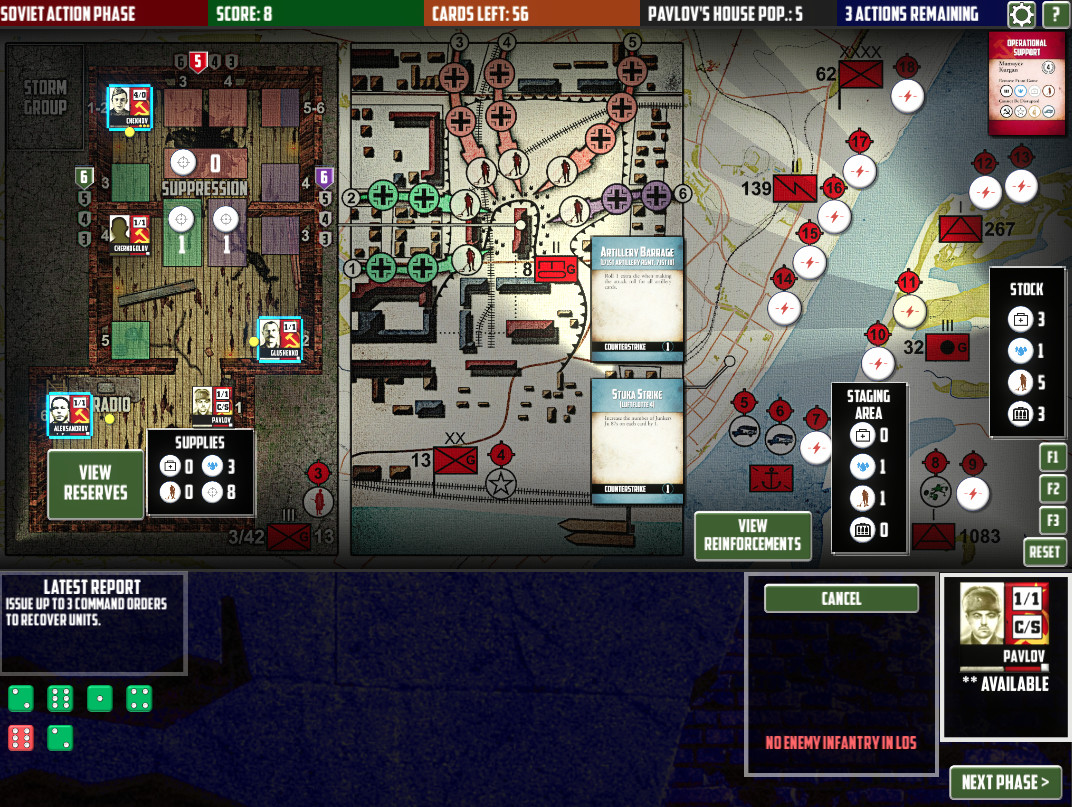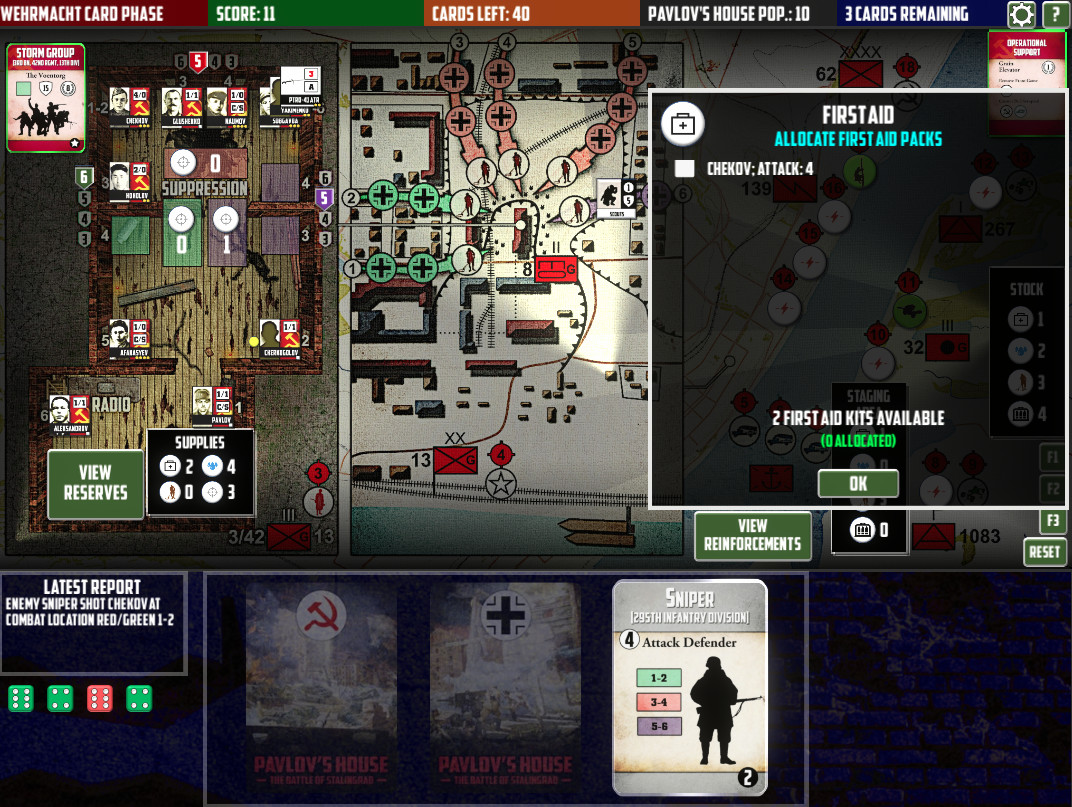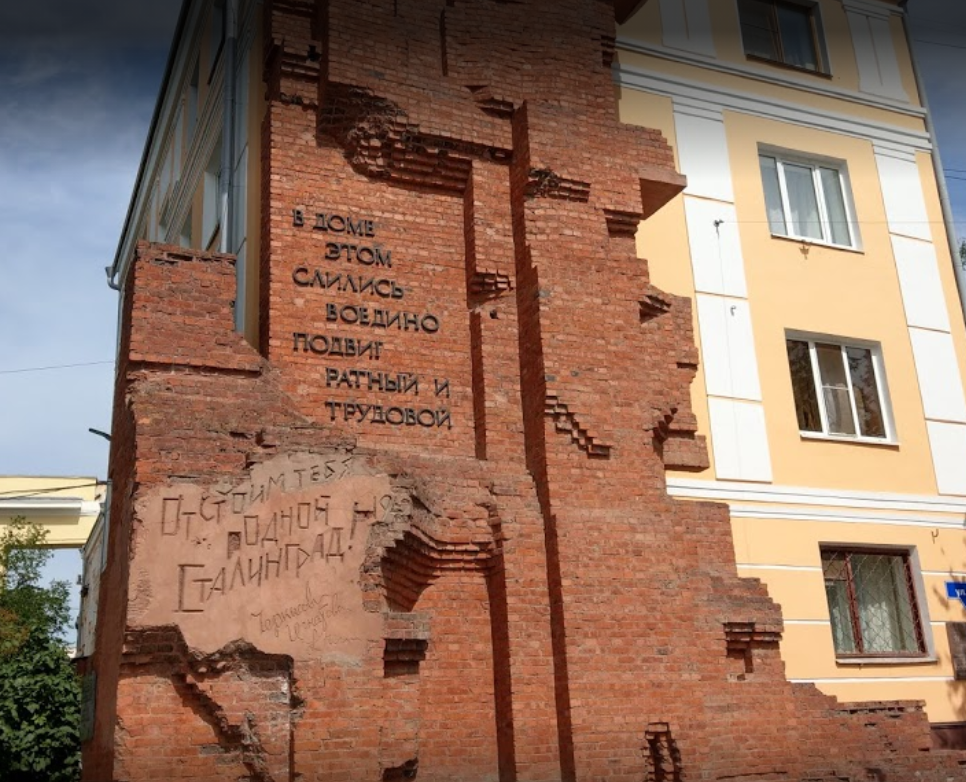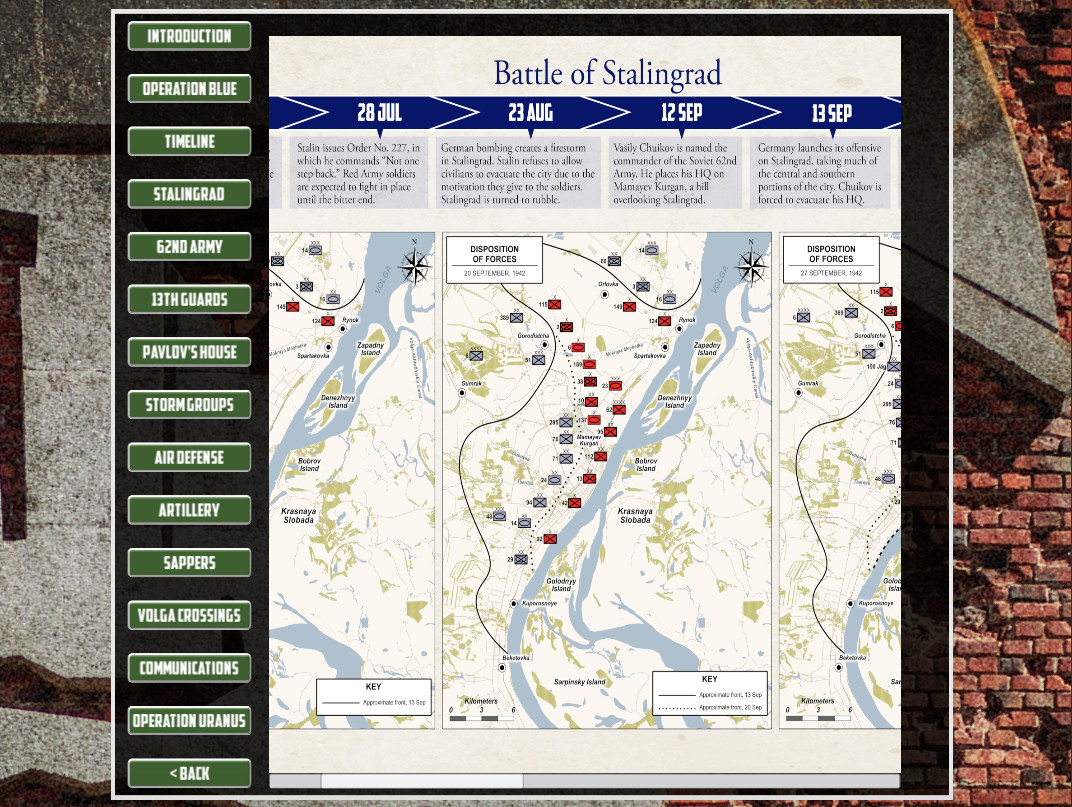Preview: Pavlov’s House Digital Rings the Bell
By Mitch Reed
When I first heard about this game being ported to a digital format, I was excited and also worried on how some ports from board games turn out. After bugging Dave Thompson for a preview copy, I got the chance to check it out, and it is amazing and will make you salivate to play over and over again. Pavlov’s house was the first game created for David Thompson (designer of Undaunted among other games) in this Desperate Defense series. The game is focused on the Battle of Stalingrad and the defense of an apartment building by a group of about thirty Soviet Soldiers who held out in the building for almost two months. Lead by Sergeant Yakov Pavlov, the group beat back numerous German attacks until relieved and became part of Soviet lore during the Great Patriotic War.

The board game version of Pavlov’s House was produced by and hit the market in 2018 and immediately became a classic. Pavlov’s House was designed as a solo game (with the ability to have up to 3 players) and is a mix of a solid wargame with some worker placement and resource management aspects to it.
I love the board game, and when asked how does it play, I start off by saying “tense”. Each turn as the German’s creep towards your positions and you have a lot of decisions to make, do you send in more troops? Supplies? Do you have the anti-tank troops needed to prevent that Panzer from smashing down the walls of the house?
These mechanics just add to a very tense situation that lasts a little over an hour. Because of the card mechanic, no two games will ever play the same way. My only regret when it comes to Pavlov’s House is that I did not get in on the original Kickstarter. I fixed that by ensuring that all titles in this series become a condition response to back on Kickstarter. I can’t wait to get the latest title in the series “Soldiers in Postman’s Uniforms” which focuses on the Polish defense of Post Office #1 in Danzig.

As I stated above, some ports are amazing games that faithfully recreate the board game experience. Some just miss that mark by a lot. The port by Richard Berger and did an excellent job bringing the game to the digital format. Richard Berger approached David and DVG about porting Pavlov’s House to digital because he is a huge fan of the game and played well over 100 times.
Sometimes this affection makes the final product a smashing success since their love of the game ensures that they recreate the experience of the game in the digital format seamlessly. The proof that they succeeded here also came from David, who is not a digital gamer, but loves the game in its new format.
Before you think David’s, response was the standard response, in this case, I can tell you that when I have asked other board game developers what they think of the digital port I usually get a comment such as “it is Ok, but I wish they…”
Hearing that he loves it from the game designer is something I am not used to.

From my first few games, I felt that same feeling of tension that the board game gives me. I also realized how I misplayed some tactical aspects of the board game that became evident as I played through the digital port.

Just like in the case of David Thompson, and something I state all the time is that digital, board, and miniature gamers are just different breeds, almost like cousins. Few gamers dabble let alone love all three mediums, which makes the target for such a project elusive. A lot of gamers will often say, “why do I need the digital version of a game I already own”, and this is probably even more true for a solitaire game.
I would counter this by stating that the digital version allows you to enjoy a game you love even more. You can start a game and not have to clear a table in your house or spend the time to set it up. You can also save it and come back to it later. When I played the board version, I usually stayed put until the game ended, now I can play the game more leisurely and more often and not have put sacrifice my dining room table for an hour.

The fact the game will come out on PC and tablet makes the game even more of a must-buy for board gamers. I love tablet gaming and I wished that it was a bigger “thing”, the ability to get in a game while waiting in line for something like a C-19 shot means that you can enjoy this game, at any place or at any time. One of my favorite solo games developed by DVG was Phantom Leader, which I played well before I played any of their games on a table. I wish they would not only update Phantom Leader so newer tablets can run it, but also get more of the Leader series on PC and tablet.

Another aspect I like about this game coming out in digital is that the player base of this game increases. Few solo games have led to conversations detailing my experience as much as Pavlov’s House has. I have spoken to more than a handful of gamers about a specific Pavlov’s House game experience which illustrates why the game is so popular.

Right now, the game is on track to be released on the on 26 February and has been submitted to the Apple store for a release on the same date. I urge all fans of this game to pick it up and I recommend that those who want to play a great wargame also get a copy of Pavlov’s House.

I was able to get with Richard Berger for a Q&A via email. I wanted to use these as background, however, the answers show you his love for Pavlov’s House and maybe reveals some future plans.
What was the biggest challenge in porting this game to digital?
The base game itself wasn’t too hard to adapt – the rules are very clear, and there’s a nice flow in the design. We had a prototype up and running in a couple of weeks and it showed that a digital version would work well.
Also, as a solo game, there’s no need to worry about the AI! David had already done the hard work there balancing the card decks. The longest amount of time has been spent on polishing the visuals – where on a physical board tokens stand out well, they needed some help on the digital version, so getting this right has probably been the most difficult part.
I had a number of different experiments with board effects, lighting and shadows, color tones, etc. to try and help bring the digital version to life. In fact, I was still adjusting it last week and will probably carry on for a while yet. Oh, and I’ve been through about 17 different versions of the dice images in the game.
Any plans for other games in the series?
Not at the moment. I like to stay as focused as possible on the task at hand which is Pavlov’s House, and then any post-release support it needs of course. We are exploring a couple of other options, but nothing in this series. Hopefully, we’ll have something to announce fairly soon.
David told me you loved this game, what about it made it a game you played over 100 times?
When I very first played the (cardboard) version of Pavlov’s House, I was immediately grabbed by how it told a complete story that was influenced by my decisions. There were successes, failures, close calls, and back from the brink recoveries where a last-minute suppression fire roll would save the game. Every play is different and absolutely no two games are ever the same. In fact, I’d go further and say that every turn you’re having to make a new decision as the situation changes from the previous turn.
I’ve developed a couple of strategies of my own in these plays (I like to get Chekhov out as early as possible, and all three commanders on the board as soon as the first resupply card comes up with an anti-tank team not far behind) but they’re no guarantee of success, and I’ve not used suppression fire very well in my strategies yet.
So, there’s still plenty more scope for improvement! I should add that while the game is dice heavy, this actually works as a balance – I’ve never yet played a game where I felt the dice rolls were really against me. It just keeps things varied. When rolls go well you feel like a genius, and when they don’t you know that the luck will even itself out.
